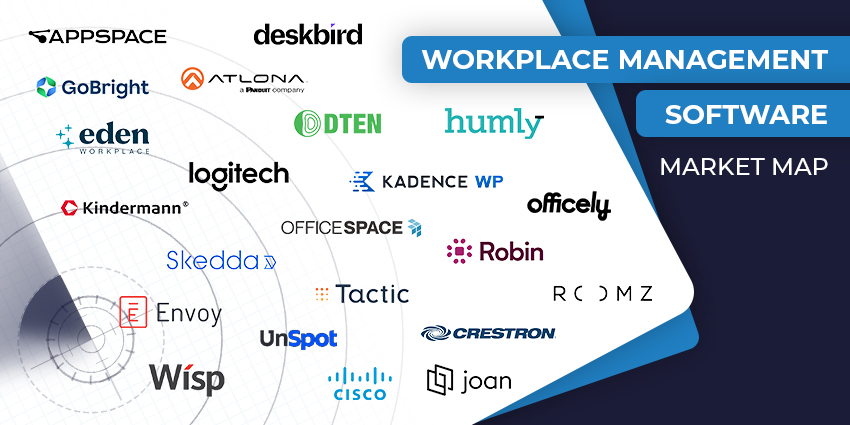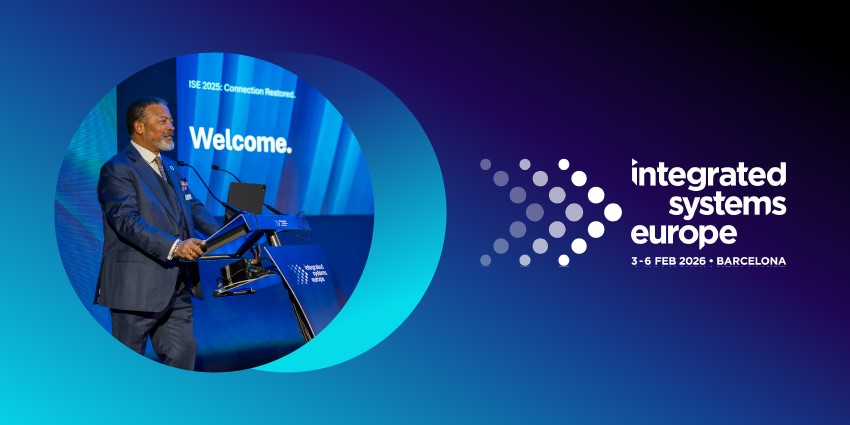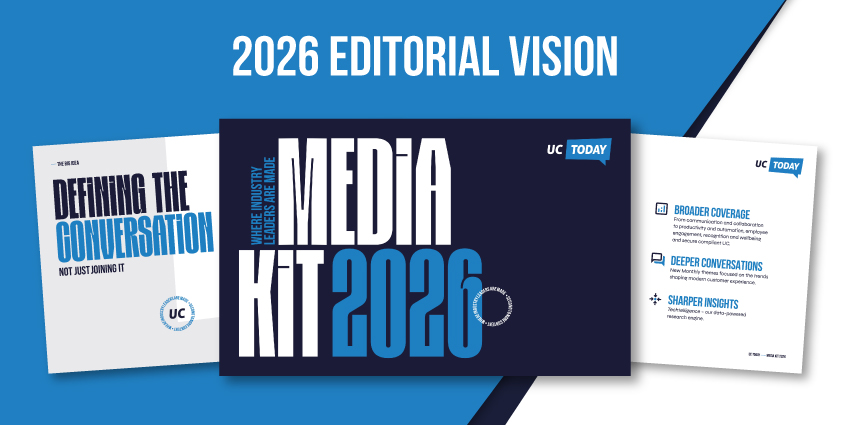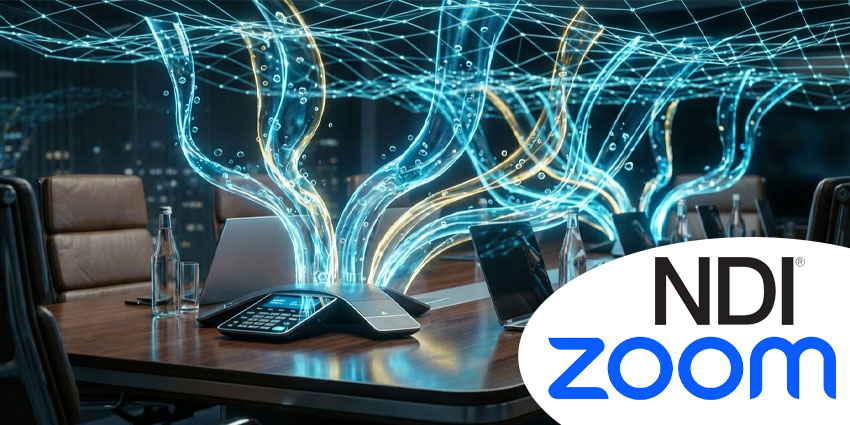Walk into most offices right now and you’ll see a pattern. Certain desks are always claimed early. Some meeting rooms stay booked solid, others sit empty for days. A few corners become ad-hoc project hubs, while other spaces are forgotten entirely.
It’s rarely intentional. People book what’s familiar, or what’s closest, and teams spread out in ways that don’t always match how the space was designed to work. Over time, this adds friction: overcrowded zones, underused areas, and employees losing time hunting for somewhere to settle in.
Workplace management software is designed to make sense of that ebb and flow. Not from a spreadsheet, but from the day-to-day movements inside the building. It connects what staff see on their phones to what facilities teams see in occupancy data, so the right spaces get used at the right times.
This guide looks at the top workplace management software vendors for 2025, taken from our Workplace Management marketplace. These are the systems built to match the actual rhythms of an enterprise office, whether that’s a single HQ or a network of sites spread across continents.
The Best Workplace Management Software Vendors
Workplace Management Software Vendors: Aligning Teams
Every vendor here approaches workplace management software differently. Some focus on making it effortless to find a desk or reserve a meeting room. Others drill into occupancy patterns, surfacing trends that influence everything from cleaning schedules to lease decisions.
A few deliver integrated workplace management software suites, where booking, wayfinding, communications, and analytics are all tied into one system.
What they share is an attention to how people actually use space – less about theoretical floor plans, more about what’s happening on a Tuesday morning when three project teams arrive at once. Let’s take a closer look at the leaders.
Appspace
Appspace pulls familiar workplace tasks into one place. Staff reserve desks and rooms, see live wayfinding on lobby screens, and skim company updates in the same app. Facilities teams manage the screens, the reservations, and the content from a single console, which keeps rollouts tidy across floors and regions. The result is a workplace that feels truly coordinated.
For many enterprises, the appeal is breadth. Appspace covers space reservation, digital signage, wayfinding kiosks, and a modern intranet, all tied to the same data and permissions. That means what appears on a room panel or a lobby display matches what people see on their phones. It also means less admin drift when a new building or floor comes online.
Appspace’s tools are available on the web and via an employee app and can integrate seamlessly with the technologies teams use daily, like Microsoft Teams, Zoom, Zendesk, and Slack.
Atlona
Atlona’s Velocity system is built for straightforward room scheduling at scale. Touch panels in 7- and 10-inch sizes sit outside rooms with LED bezels that show availability, and the interface can be branded and tweaked so it matches the building’s look. People can book ad hoc, extend a meeting, or browse nearby rooms directly on the screen. Calendars tie into Google Workspace and Microsoft 365, which keeps the booking source of truth intact.
Behind those panels sits a gateway that handles AV control, room scheduling, and asset management. There are gateway tiers for different footprints, and recent updates have improved capacity and performance for larger deployments.
Accessible via a web browser for simplicity, Atlona’s technology helps business leaders and IT teams streamline device configuration, deployment, and management with convenient visual tools. Companies can also leverage the Velocity Device Manager to configure Atlona endpoints and take advantage of industry-standard network security features and protocols.
Deskbird
Supporting various forms of workplaces, from hot-desking spaces to office neighborhoods, Deskbird gives companies an intuitive desk booking app for the hybrid office. With the technology, employees can rapidly search for available desks, focus spaces, phone booths, meeting rooms, and parking spaces and book the environments they need in seconds.
It supports two-click booking for desks, parking, and shared resources, plus native connections to Outlook and Google Calendar for room scheduling. The emphasis is speed and clarity, which makes hybrid days much easier to plan.
Multiple hybrid-work policies are supported, user provisioning runs from HR data, and room bookings can be reshuffled with drag-and-drop when plans change. Usage analytics highlight patterns that point to over- or under-utilized areas, useful when rethinking a floor. It is straightforward workplace management software with the right knobs and dials for large environments.
DTEN
DTEN produces hardware and software solutions for collaborative spaces, meeting rooms, and specific apps like Microsoft Teams. The organization’s solutions are compatible with Windows and Android devices and include access to room scheduling features, device management solutions, and remote access systems for updating hardware remotely.
DTEN also focuses on the hands-on experience of meetings. The Mate is a 10-inch touch controller that lives on meeting room tables. It lets users start Teams or Zoom sessions, admit attendees, adjust camera and mic settings, and more with a tap.
Vaunted for its ease, DTEN’s hardware is used in rooms where tech needs to just work, reliably. Orchestration happens through DTEN’s Orbit platform, which lets administrators monitor device health, push firmware updates, and manage inventory remotely. That helps when you’re rolling out gear at scale or across sites
Eden
Focusing on user-friendly solutions for workplace experiences, Eden produces a wide range of workplace management software tools. Companies can access an all-in-one platform to manage internal ticketing flows, track performance metrics, and leverage room scheduling capabilities. There’s also built-in desk booking software to make desk reservations easier for remote and hybrid teams.
If someone books a desk, they can do it from Slack, Teams, or Google Calendar. Likewise, a guest can pre-register, sign an NDA, and get a badge, all in the same flow Facilities teams gain oversight through analytics and reporting tools.
They see occupancy trends, delivery flow, and ticket lifecycles. That helps teams answer real questions: which desks go unused? When do deliveries bottleneck? Where could resources shift without constant juggling?
Envoy Workplace
Envoy is easy to recognize at reception, where guest check-in lives on an iPad and hosts get notified automatically. The same system extends to desks and rooms, so employees open one app, see availability, and book what they need. Because it all runs on a shared backbone, occupancy data captures a fuller picture of how the office is used, from arrivals to meeting room usage.
The analytics are practical. The Occupancy Dashboard blends signals from Visitors, Desks and Rooms, which helps teams plan for peak days, reduce no-shows, and rebalance space where demand is lopsided. Meeting room tools add simple controls like reminders and release rules, useful when ghost bookings creep in. This is workplace management software that helps a building run closer to the way people actually use it.
With Envoy, companies can build a more cost-effective work environment, adapting to how people use their spaces. They can also offer employees access to valuable tools to coordinate their time on-site with team members using unified schedules.
Humly
Humly takes a tactile approach to workplace systems. Their Room Display mounts outside meeting spaces and shows status with clarity: who booked it, for how long, and what’s next with a single tap. It’s intuitive, sleek, and doesn’t demand an HR login.
They’ve added sensors through Humly Sense, which tie room displays and booking panels to live occupancy, air quality, and temperature data. That’s useful when you’re tracking room comfort or usage in real time.
The hardware is designed to last, minimalist, durable, and even available in a “Max Security” version that strips out Wi-Fi, Bluetooth, and USB ports to meet strict office standards. Everything runs through a unified system that integrates with Teams, Appspace, and more. Plus, there’s an open API available for custom integrations.
Kadence
Kadence focuses on the day-to-day rhythm of hybrid work. Employees open the app, see who plans to be in, pick desks from an interactive floor plan, and book rooms without hunting through multiple systems. It also covers visitors and workplace events, which helps when teams coordinate offsites or training days.
On the admin side, the platform pulls usage data into simple reports. You can see which areas fill up, which sit empty, and where to adjust layouts. Recent reviews and updates highlight stronger analytics and policy controls for hybrid schedules, plus mobile features that make quick bookings painless. If the aim is a reliable view of attendance patterns and faster bookings, Kadence gets the basics right and keeps the interface light.
This is workplace management software for teams that want fewer steps between “who’s in today” and “where should we sit,” with the data to reshape space when the pattern changes.
Kindermann
Kindermann’s OpenSpaces is a straightforward booking system for rooms and collaboration areas. It pairs a Windows configuration tool with door signs that show status at a glance, and it is positioned for organizations that want a clear, hardware-first approach to room visibility. The idea is simple: publish the schedule at the door, make check-ins easy, and reduce time wasted searching for space.
The company also works across the wider “new work” stack, including BYOM and BYOD with its Klick&Show line, which helps when a meeting needs wireless presentation or a quick video session without cables. That ecosystem thinking makes OpenSpaces more useful in mixed environments where different teams bring different devices.
For enterprises that value dependable room signage and uncomplicated booking, Kindermann keeps the focus on clarity at the door and simple administration in the background. It fits neatly alongside broader AV standards already in place, which eases rollout.
Officely
Created to solve the issues associated with meeting room booking and hot desking, Officely is a comprehensive application users can add to their Microsoft Teams or Slack platforms. With the app, users can access desk booking capabilities in the tools they’re already using and gain insights into how teams and employees are using different spaces.
The value for workplace teams is in the simplicity. There’s an at-a-glance view of daily attendance, plus the option to set capacity limits or assign permanent desks where needed. Managers get a record of occupancy trends, making it easier to spot busy days or underused space.
Because Officely sits in the chat tools people already use, adoption is quick and updates are immediate. For enterprises wanting to coordinate in-office schedules without adding another layer of software, it’s workplace management software that fits well into the flow of work.
OfficeSpace Software
OfficeSpace Software is a workplace management software provider that helps companies and teams plan their days and weeks more effectively. The company’s complete portfolio of solutions includes everything from Workplace Intelligence software, with reports and insights into resource usage, to scenario planning tools and move management features.
Companies can access streamlined desk and room booking capabilities, visitor registration tools, and request management systems in one unified space. Plus, the company’s tools come with in-depth reports and analytics to help reduce operational costs. The tools are compatible with leading collaboration platforms like Slack and Microsoft Teams.
Let’s say a team is expanding, they want to justify adding a pod area. A Facilities lead can pull utilization reports, map peak occupancy, and propose changes with data behind them. The booking, directory, and space-management tools all feed into the same UX.
Robin
Otherwise known as Robin Powered, Robin produces workplace management software, intelligent automation, and business analytical tools. The company’s software gives organizations a highly visual environment where employees can book desks, manage rooms, and align their schedules with other employees in one place.
The unified system integrates with tools like Outlook, Microsoft Teams, and Google Calendar and features its own mobile app. Robin also leans into AI with suggested desk options and space-planning cues based on past behavior. If you often collaborate with Marketing on Wednesdays, Robin might nudge you to book desks near them. Meanwhile, admin tools like digital signage and visitor kiosks reduce friction and lift adoption.
Enterprise-scale teams value how Robin lets them lean into analytics, capturing presence, demand curves, and space ROI, while keeping everyday use simple for employees. It’s workplace management software that balances authority with adaptability.
Roomz
Roomz keeps things tangible: book a meeting room or check availability directly at the display mounted outside. Those same panels link to sensors that offer real-time occupancy data on whether a room is empty, occupied, or just unlocked. There’s an app, too, for on-the-move bookings.
Additionally, Roomz’s intelligent office solutions can help companies build digital floorplans for their buildings, assisting employees with choosing suitable meeting rooms and shared desks. The MyRoomz app for desk and meeting room booking supports single sign-on, works with mobile devices, and integrates with leading platforms like Microsoft Teams.
For organizations that need to anchor their workplace management software in hardware-driven clarity, Roomz offers a minimal, understandable, and quietly intelligent experience.
Skedda
Skedda specializes in workplace management software for shared spaces – desks, meeting rooms, studios, or any other resource with time slots to manage. The browser-based interface shows a clean calendar view where staff can reserve spaces, set recurring bookings, or release slots if plans change.
Admins can set up rules for different user groups, so certain spaces are only available to specific teams or at certain times. Payment handling is built in, which makes it viable for mixed-use environments or coworking hubs. Reporting shows how each space is being used, giving workplace teams the insight to adjust access or reconfigure layouts.
Skedda also integrates with project management, employee experience, and collaboration software and supports single sign-on. Plus, there’s a mobile app for employee self-service booking.
Tactic
Tactic is designed for hybrid schedules. Employees can see when colleagues plan to be in, choose a desk nearby, and reserve meeting rooms without toggling between tools. The mobile app mirrors the desktop version, so changes on the go are simple.
Workplace teams get a live view of occupancy and bookings, plus historical reports for trend analysis. Features like check-in requirements help reduce ghost bookings, and integrations with Slack, Teams, and calendars ensure schedules stay consistent across platforms.
For companies fine-tuning their hybrid strategy, Tactic offers a balance of visibility and control. It’s workplace management software that supports both employee choice and structured use of space.
UnSpot
UnSpot combines desk booking, meeting room reservations, and analytics into one workplace management software platform. Employees can view interactive maps, book by proximity to teammates, or reserve parking and other resources. The system is accessible via web and mobile, with calendar integrations for Google and Microsoft.
Analytics highlight occupancy patterns and underused areas, giving workplace teams the data to redesign layouts or adjust capacity. Administrators can set booking policies and automate check-ins to keep usage accurate.
Plus, the toolkit has weekly scheduling capabilities, allowing employees to align their schedules with other staff members and prepare for upcoming events.
Wisp
When a facilities manager needs to answer “Which floors are crowded today?” or “Can we repurpose that underused wing?”, Wisp turns those questions into visual clarity. The platform meshes interactive floor plans with live usage data, letting you see which desks are being booked, where occupancy fluctuates, and how yesterday’s traffic compares to today.
Wisp’s reporting and analytical tools offer insights into real-time data about space utilization, as well as graphical historical reports. Companies can also take advantage of floor plan heatmaps, benchmarking tools for attendance, and customizable dashboards.
Wisp also layers in scenario planning and wayfinding, so layouts are built on foresight, not guesswork. When hybrid patterns shift, facilities leaders can test out “what if” maps before anything moves.
Crestron
Known for its broad range of hardware solutions and devices for meeting rooms, Crestron also produces an intuitive workplace management platform. The Crestron Flex platform includes tools for wireless conferencing and presentation, as well as a complete scheduling tool, to ensure teams can reserve the desks and spaces they need for crucial work.
The all-in-one dashboard allows companies to schedule and push updates to devices wherever they are and centrally configure and deploy technology. You can control systems from a distance and design room spaces based on enhanced insights into resource usage. Plus, there are tools for automating various tasks, like updating firmware.
If you manage a real estate footprint where visibility and control matter equally, Crestron brings both. The hardware, calendar syncing, and management tools deliver workplace management software that feels bulletproof across floors and regions.
Cisco
Producing both software and hardware for unified communications and collaboration, Cisco makes room management simple with its RoomOS technology. Companies can access a cloud-based solution for tracking device health, analytics, and workplace insights, reducing IT headaches. There are even real-time monitoring solutions for tracking environmental conditions and occupancy through smart sensors to boost employee wellbeing.
The RoomOS solution offers an intuitive user experience, allowing companies to rapidly connect their devices to both Webex solutions and third-party applications. Plus, it includes valuable reporting and analytical tools to assist organizations with resource management.
Cisco also offers a “Smart Workspaces” solution. With this, the infrastructure everyone already runs: Wi-Fi, Webex boards, access points, also becomes a sensor grid. Meeting rooms become responsive: as people enter, HVAC adjusts, lighting shifts, and signage updates.
Joan
Joan blends physical room signage with cloud-based booking. You walk past a Joan display (they’re e-paper and battery-powered), tap to reserve, and the schedule stays live whether you’re on desktop or mobile. It’s neat, low-power, and refreshes bookings with zero fuss.
It’s more than signage, too. Desk booking, visitor sign-ins, resource reservations (even parking or lockers) live in one place. Integration with Teams, Google, and Outlook means everything syncs. The hardware adds polish; the cloud adds flexibility.
With Joan, companies can also assign displays and devices to specific rooms and give team members a way to book the spaces they need seamlessly through the web, a mobile app, or a touchscreen. Joan software can also connect with any existing LCD tablets or displays you already use.
GoBright
GoBright is the workplace management software platform you turn to when you want bookings, signage, visitors, analytics, all without assembling different tools. Staff book desks, rooms, or even parking via interactive maps or apps, and LED desk lights show who’s in and who’s not.
The portal keeps it functional. You can invite guests, send digital signage, and even let employees report issues, like a broken projector, from the same interface. It cuts a lot of small interruptions that tend to pile up.
For facilities teams, GoBright’s analytics make a difference. Seeing which desks or rooms go unused means informed layout changes. If occupancy dips, cleaning shifts, or a wing gets repurposed, it’s because data told you it made sense.
Logitech
If your workplace already uses Logitech gear, Sync is the admin sidekick. IT teams can update, monitor, and troubleshoot video hardware across rooms from a central dashboard, no need to walk to each device.
Sync also handles desk and room booking, occupancy insights, and policy enforcement. If someone forgets to check in, the system will flag or drop it. You get cleaner data, smarter notifications, and fewer ghosted spaces.
For workplaces with a lot of endpoints, like cameras, displays, booking panels, Sync ties them all together. It keeps tech healthy, bookings clean, and workspace usage clear. That practical cohesion is at the heart of this workplace management software offering.
The Top Workplace Management Software
Choosing the right workplace management software isn’t a one-size decision. In some offices, the big win is simply helping people find each other on the days they’re in. In others, it’s the way real-time data flags unused rooms so they can be reclaimed for something better.
Different problems, different fixes, but all with the same aim: making the space work harder for the people in it. If you’re ready to rethink the hybrid work coordination, you don’t have to go it alone.
UC Today is built to help you track the shifts in the market, hear from people who’ve been through similar projects, and make decisions that stand up in the long-term.
- Dive into the data: Our research reports go past the marketing lines to show where the market’s heading, how vendors are performing, and which trends are worth watching.
- Connect with people who’ve done it before: The UC Community is full of workplace leaders, IT heads, and project managers trading notes on what worked, what didn’t, and why.
- See the tech in action: At upcoming industry events, you can walk the stands, watch the demos, and talk to the people building and buying these systems right now.
- Get the full picture: The Ultimate UC Buyer’s Guide walks you through the process from gathering requirements to final rollout, with practical advice at each step.
The way we use offices is still shifting. With a clear strategy, and the right workplace management software to support it, you can make sure those shifts work in your favor.







